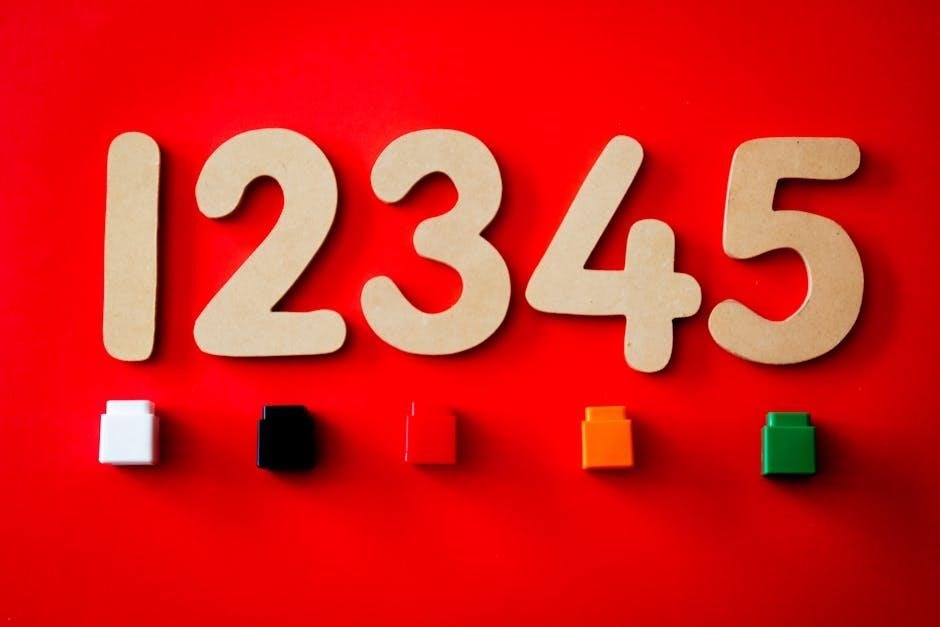One D&D Warlock: Class Overview
The Warlock in One D&D is a unique class drawing power from otherworldly pacts. Warlocks gain unique magical abilities and forbidden knowledge through Eldritch Invocations. Their spellcasting‚ known as Pact Magic‚ sets them apart from other mages‚ offering a distinct playstyle.
Warlock Role and Theme in One D&D
In One D&D‚ the Warlock embodies a spellcaster who gains power through pacts with entities like Archfey‚ Fiends‚ or Great Old Ones. This class provides a unique blend of magical prowess and compelling roleplaying opportunities‚ centered around the bargains they strike. Warlocks excel at both damage dealing and control‚ shaping the battlefield with their spells and invocations. The theme revolves around forbidden knowledge‚ dark bargains‚ and the constant negotiation of power‚ making them versatile and engaging characters within a D&D party‚ offering a dark and mysterious presence.
Pact Magic: Unique Spellcasting
Pact Magic distinguishes the Warlock with a specialized approach to spellcasting. Unlike other spellcasters‚ Warlocks possess a limited number of spell slots that are always cast at their highest level. This mechanic encourages strategic spell selection and maximizing each cast’s impact. Warlocks regain their spell slots after a short rest‚ making them potent in encounters between long rests. This system offers a unique rhythm to their spellcasting‚ encouraging both careful planning and explosive bursts of magical power‚ setting them apart from conventional spellcasters in One D&D‚ emphasizing quality over quantity.

Key Warlock Class Features in One D&D
Key features include Hit Points‚ proficiencies‚ Otherworldly Patron‚ Eldritch Invocations‚ and Pact Boon. These define the Warlock’s capabilities and customization. The Patron shapes their powers‚ while Invocations offer versatility‚ and the Pact Boon empowers them further.
Hit Points and Proficiencies
Warlocks in One D&D utilize a d8 hit die per level‚ offering reasonable survivability for a spellcaster. At 1st level‚ a Warlock starts with 8 hit points plus their Constitution modifier. Subsequent levels grant 1d8 (or 5) + Constitution modifier hit points. Proficiencies include light armor and simple weapons‚ providing some basic defense and offensive options. They have Wisdom and Charisma saving throw proficiencies‚ valuable for resisting mind control and paralysis. However‚ they may face challenges against effects targeting other saving throws; Starting proficiencies‚ while not ideal‚ are better than no armor at all.
Otherworldly Patron: Source of Power
At 1st level‚ a Warlock forges a pact with an Otherworldly Patron‚ shaping their abilities and role. Options include the Archfey‚ the Fiend‚ or the Great Old One. The choice of Patron grants unique features at 1st‚ 6th‚ 10th‚ and 14th levels. The Great Old One allows players to alter spell damage to psychic‚ emulating psionic abilities. Archfey patrons grant access to Misty Step. These pacts are the core of the Warlock’s identity‚ influencing their spells‚ invocations‚ and overall play style‚ defining their relationship with powerful entities.
Eldritch Invocations: Customization and Versatility
Eldritch Invocations are a defining feature of the Warlock class‚ providing customization and versatility. These invocations grant magical abilities and other lessons‚ enhancing the Warlock’s power. Warlocks gain their first invocation at level 1‚ with more gained as they level up; The 2024 Warlock class allows modifications to Eldritch Invocations. They allow for replacing cantrips learned from Pact Magic with other Warlock cantrips. These invocations set the Warlock apart‚ offering unique and flavorful options. The optional class features also give the Warlock the ability to modify them.
Pact Boon: Empowering the Warlock
The Pact Boon feature empowers the Warlock‚ offering further customization and enhancing their connection to their otherworldly patron. This feature allows Warlocks to choose a specific gift‚ such as Pact of the Blade‚ Pact of the Chain‚ or Pact of the Tome‚ each granting unique abilities and benefits. The Pact Boon can be changed when you level up. This allows Warlocks to adapt and optimize their abilities. This feature helps define the Warlock‚ by allowing them to have a closer connection with their patron. This is another way that Warlocks are allowed to have customization.
Warlock Level Progression and Features in One D&D
As Warlocks advance‚ they unlock new features and abilities‚ as indicated in the Warlock Features table. These include Eldritch Invocations‚ Pact Boons‚ and Mystic Arcanum‚ each enhancing their power and versatility as they deepen their pact.
Level 1 Features: Starting Abilities
At level 1‚ Warlocks gain several foundational abilities. They receive light armor proficiency‚ offering some protection. Eldritch Invocations are unlocked‚ granting magical abilities and forbidden knowledge to customize their character. Warlocks also choose an Otherworldly Patron‚ such as the Archfey‚ the Fiend‚ or the Great Old One. This choice provides unique features at levels 1‚ 6‚ 10‚ and 14. Pact Magic allows them to learn spells‚ starting with two cantrips. Their initial abilities set the stage for their unique role. It allows for character flavor and customization early in the game.
Eldritch Versatility: Optional Feature
Eldritch Versatility is an optional feature for the Warlock class‚ offering customization. This feature provides the flexibility to adapt as the game progresses. Warlocks can replace a cantrip learned from their Pact Magic feature with another from the Warlock spell list. This allows for fine-tuning their magical repertoire. Furthermore‚ they can swap their chosen Pact Boon for another option. For Warlocks at 12th level or higher‚ one spell from their Mystic Arcanum can be replaced with another Warlock spell. This versatility ensures Warlocks remain adaptable throughout their adventures.
Mystic Arcanum: High-Level Spells
Mystic Arcanum is a key feature for high-level Warlocks‚ granting access to powerful spells. This feature allows Warlocks to learn and cast spells of 6th level and higher‚ bypassing the limitations of their Pact Magic spell slots. At certain levels‚ Warlocks gain the ability to cast one spell of a specific high level once per long rest without expending a spell slot. This enables them to unleash potent magical effects‚ significantly enhancing their combat capabilities and utility. The spells chosen for Mystic Arcanum are permanent‚ reflecting the Warlock’s deep connection to their patron.

Changes to the Warlock Class in One D&D
One D&D introduces significant changes to the Warlock‚ impacting spell slot mechanics and invocations. These adjustments aim to balance the class and address player feedback regarding its reliance on short rests and limited spell options.
Spell Slot Mechanics
The Warlock’s spell slot mechanics have undergone revisions in One D&D. The Warlock Features table dictates the number of spell slots available for casting Warlock spells‚ ranging from levels 1 to 5. These changes impact how frequently and powerfully Warlocks can cast spells‚ influencing their overall effectiveness in prolonged encounters. The adjustments aim to address concerns about the Warlock’s limited spellcasting resources compared to other spellcasters. The intention is to provide a more sustainable and engaging spellcasting experience‚ reducing the reliance on short rests while maintaining the Warlock’s unique flavor and power.
Invocation Modifications
Eldritch Invocations‚ a defining feature of the Warlock class‚ have seen modifications in One D&D. At level 1‚ Warlocks gain access to Eldritch Invocations‚ pieces of forbidden knowledge that grant magical abilities. These modifications aim to provide greater customization and versatility to the Warlock‚ allowing players to tailor their character to their preferred playstyle; The changes may include adjustments to existing invocations‚ the addition of new options‚ or alterations to the level at which certain invocations become available. Overall‚ these modifications enhance the Warlock’s identity and ensure meaningful choices throughout their progression.

Subclasses and Patrons in One D&D
Warlocks in One D&D choose an Otherworldly Patron‚ shaping their abilities and playstyle. The Great Old One focuses on psychic damage‚ while the Archfey grants access to Misty Step. These choices define a Warlock’s unique path.
The Great Old One: Psychic Damage Focus
The Great Old One patron in One D&D allows Warlocks to tap into the alien and often terrifying powers of entities from beyond the known planes. This subclass emphasizes dealing psychic damage‚ reflecting the madness-inducing nature of these cosmic beings. A key feature allows players to alter their Warlock spells‚ converting damage types to psychic‚ enhancing the thematic connection.
This adaptation aims to capture the psionic elements associated with the Great Old One‚ allowing players to embody a character whose magic warps the minds of their enemies. The subclass offers a unique playstyle centered around manipulating and damaging foes through psychic energy. The Great Old One Warlock becomes a conduit for aberrant power.
The Archfey: Misty Step Access
The Archfey patron grants Warlocks access to the Feywild’s enchanting and elusive powers. A notable feature is the early acquisition of Misty Step‚ enhancing mobility and tactical options. This allows Archfey Warlocks to dart across the battlefield‚ evading danger or positioning themselves for optimal spellcasting. This addition emphasizes the Archfey’s capricious nature and mastery over illusion and trickery.
The subclass aims to provide a distinct playstyle centered around mobility and control‚ allowing players to embody a character deeply connected to the Feywild. The Archfey Warlock becomes a master of deception‚ using their magic to confound and outmaneuver their foes. This grants a significant advantage in various combat encounters.

Warlock Strengths and Weaknesses in One D&D
Warlocks in One D&D possess unique strengths‚ like potent Eldritch Invocations and focused spellcasting. However‚ they face weaknesses‚ including reliance on short rests and a limited number of spell slots‚ demanding tactical resource management.
Reliance on Short Rests
One of the defining characteristics‚ and potential drawbacks‚ of the Warlock class in One D&D is its reliance on short rests. Unlike other spellcasters who regain spell slots through a long rest‚ Warlocks regain all their expended spell slots after a short rest. This encourages a playstyle that involves frequent breaks‚ allowing the Warlock to consistently contribute to the party’s efforts throughout the adventuring day. However‚ this reliance can be problematic in situations where short rests are not easily accessible or when the party is under pressure to maintain a constant pace. The Warlock’s effectiveness is therefore tied to the party’s ability to accommodate their need for these rests.
Limited Spell Slots
In One D&D‚ the Warlock class is known for having a limited number of spell slots compared to other dedicated spellcasters like Wizards or Sorcerers. This limitation is a deliberate design choice to balance the Warlock’s unique ability to regain all spell slots after a short rest. While other casters may have more spell slots overall‚ the Warlock can consistently refresh their resources more frequently. This design encourages careful spell selection and strategic resource management. Warlocks must choose their spells wisely and prioritize impactful options‚ making each spell slot count in combat and exploration encounters. Despite this limitation‚ Eldritch Invocations are a big power spike to this class.
